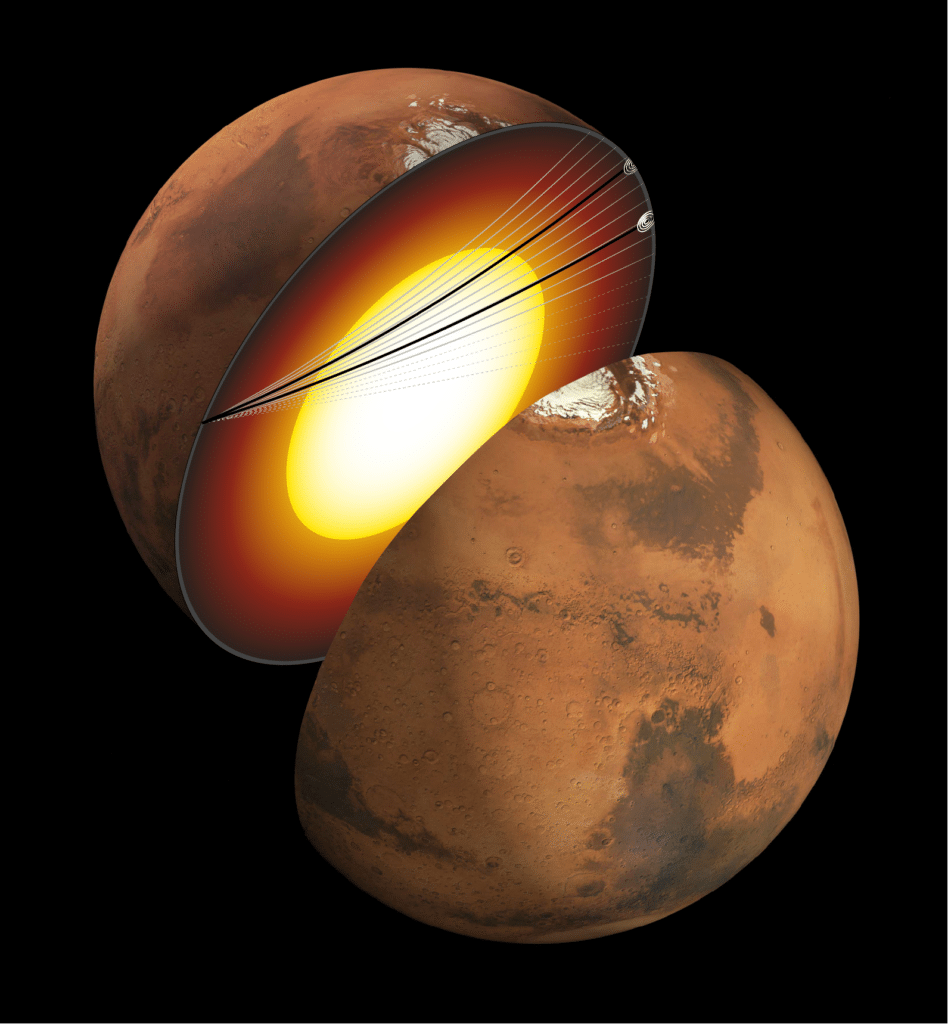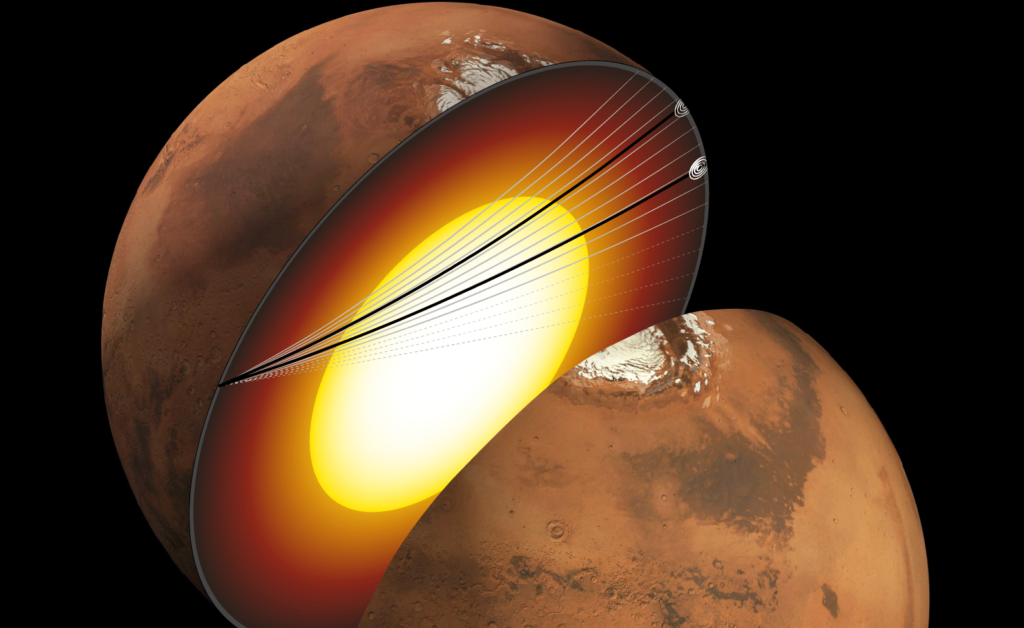Seismic waves have been detected traveling through the center of Mars for the first time, revealing a liquid core rich in sulfur and oxygen. An international research team used seismic data acquired by the NASA InSight lander to directly measure properties of Mars’s core, finding a completely liquid iron-alloy core with high percentages of sulfur and oxygen.
The findings reveal new insights into how Mars formed and geological differences between Earth and the red planet that may play a role in future colonization. Scientists believe the research is also paving the way for future expeditions to other planets such as Venus and Mercury.
The results indicate that Mars most likely has a completely liquid core, unlike Earth’s combination of a liquid outer core and solid inner core. The team also inferred details about the core’s chemical composition, such as the surprisingly large amount of light elements – namely sulfur and oxygen – present in Mars’s innermost layer. Their findings suggested that a fifth of the core’s weight is made up of those elements. That high percentage differs sharply from the comparatively lesser weight proportion of light elements in Earth’s core, indicating that the core of Mars is far less dense and more compressible than Earth’s core.
“The properties of a planet’s core can serve as a summary about how the planet formed and how it evolved dynamically over time. The end result of the formation and evolution processes can be either the generation or absence of life-sustaining conditions,” said study co-author Nicholas Schmerr, an associate professor of geology at the University of Maryland, in a statement. “The uniqueness of Earth’s core allows it to generate a magnetic field that protects us from solar winds, allowing us to keep water. Mars’s core does not generate this protective shield, and so the planet’s surface conditions are hostile to life.”

Although Mars does not currently have a magnetic field, scientists believe that there was once a magnetic shielding similar to Earth’s core-generated field due to traces of magnetism lingering in Mars’s crust. The researchers say that it could mean that Mars gradually evolved to its current conditions, changing from a planet with a potentially habitable environment into an incredibly hostile one. Conditions of the interior play a “key role” in that evolution, as might violent impacts, according to the research team.
The team believes that the research is paving the way for future expeditions to other planets such as Venus and Mercury. Study first author Dr. Jessica Irving said: “This was a huge effort, involving state-of-the-art seismological techniques which have been honed on Earth, in conjunction with new results from mineral physicists and the insights from team members who simulate how planetary interiors change over time. But the work paid off, and we now know much more about what’s happening inside the Martian core.”
“Even though the InSight mission ended in December 2022 after four years of seismic monitoring, we’re still analyzing the data that was collected,” adds Vedran Lekic, also an associate professor of geology at Maryland. “InSight will continue to influence how we understand the formation and evolution of Mars and other planets for years to come.”
The research is published in the Proceedings of the National Academy of Sciences.

-392x250.png)











Comments